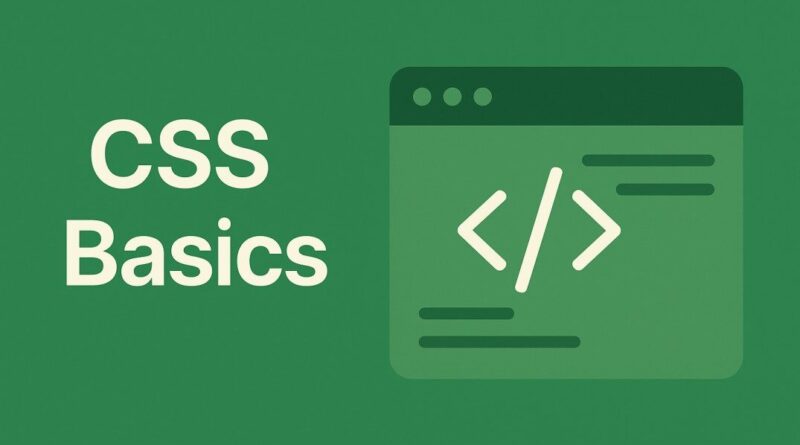CSS – Mastering Your Web Layouts: A Deep Dive into CSS Display Properties
Mastering Your Web Layouts: A Deep Dive into CSS Display Properties
Ever wondered how websites magically arrange content, with some elements neatly stacked and others flowing seamlessly side-by-side? The secret lies in a fundamental CSS property: display. Understanding display is like unlocking a superpower for your web layouts, giving you precise control over how your elements behave on the screen. Let’s unravel the mysteries of display and empower you to craft stunning, user-friendly web pages!
The Building Blocks: Block, Inline, and Inline-Block
At its core, the display property dictates an element’s fundamental layout behavior. Think of it as classifying your HTML elements into different categories, each with its own unique set of rules.
- Block-level Elements: The Space DominatorsImagine a brick. It takes up its entire allocated space, forcing anything that comes after it to start on a new line. That’s precisely how block-level elements operate. Common examples you encounter daily include
<div>,<p>(paragraphs), and<h1>(headings).- Key Characteristics:
- They always start on a new line.
- They automatically take up the full available width of their parent container.
- You can set their
width,height,margin, andpaddingwith predictable results.
- Key Characteristics:
- Inline-level Elements: The Content CompanionsNow, picture individual words in a sentence. They flow one after another, only taking up the space they need, without breaking the flow of the text. This is the essence of inline-level elements. Familiar examples include
<span>,<a>(links), and<strong>(bold text).- Key Characteristics:
- They do not start on a new line.
- They only occupy the width necessary for their content.
- While you can apply
margin-left,margin-right,padding-left, andpadding-right,margin-top,margin-bottom,padding-top,padding-bottom,width, andheightgenerally have no effect on inline elements. They are designed to flow with text.
- Key Characteristics:
- Inline-Block Elements: The Best of Both WorldsWhat if you want an element to flow like an inline element (not starting a new line) but also behave like a block element (allowing you to set its width, height, and vertical margins/padding)? Enter
display: inline-block! This powerful value offers a fantastic hybrid solution.- Key Characteristics:
- They do not start on a new line; they flow horizontally with surrounding content.
- You can set their
width,height,margin(all sides), andpadding(all sides). - They are great for creating navigation menus where items sit side-by-side but need specific dimensions, or for image galleries where images should align horizontally with some spacing.
inline-blockis your go-to when you need more control over an element’s dimensions and spacing while still maintaining a horizontal flow. It’s a popular choice for building flexible and responsive layouts. - Key Characteristics:
The Invisible Element: display: none
Sometimes, you need an element to completely vanish from your page, as if it never existed. That’s where display: none comes in handy.
- Key Characteristics:
- The element is completely hidden from the user.
- It takes up no space on the page. It’s as if the element was removed from the document flow entirely.
- It’s often used in conjunction with JavaScript to toggle visibility (e.g., showing/hiding a modal window or a hidden menu).
display: noneis a powerful tool for dynamic content and improving user experience by only showing relevant information when needed.
Why Does This Matter for Your Website?
Understanding the display property is not just theoretical; it’s absolutely crucial for building effective and appealing websites:
- Responsive Design: Knowing how elements behave with different
displayvalues allows you to create layouts that adapt gracefully to various screen sizes (think mobile, tablet, and desktop). - Semantic HTML: Choosing the correct HTML element (and thus its default
displaybehavior) helps you write more meaningful and accessible code. - Efficient Styling: By leveraging the inherent properties of
block,inline, andinline-block, you can write cleaner, more efficient CSS, avoiding unnecessary overrides. - Troubleshooting Layout Issues: Many common layout problems stem from a misunderstanding of how
displayis affecting your elements. A solid grasp of this property will empower you to quickly diagnose and fix these issues.
Elevate Your Web Development Skills!
The display property is a cornerstone of CSS layout. By truly grasping the nuances of block, inline, and inline-block, along with the utility of none, you’re not just writing CSS – you’re designing intelligent and engaging user experiences. So, next time you’re styling a webpage, remember the power of display and watch your layouts come to life!
What are your favorite ways to use display properties in your projects? Share your insights in the comments below!



